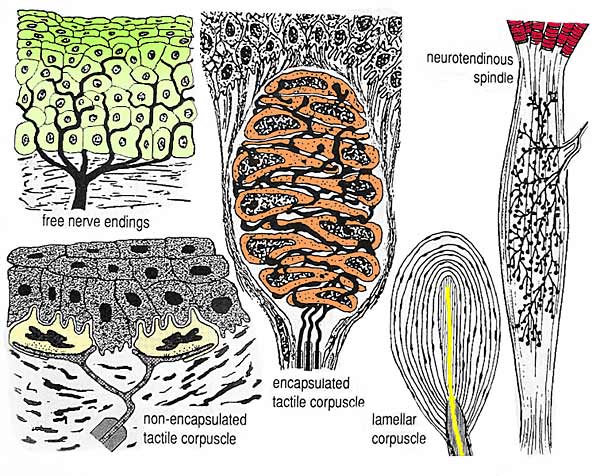

Sensory nerves are most often affected, causing burning or numbness. Diabetic neuropathy is a serious complication and may affect all three types of neurons. Up to 70% of people with diabetes suffer from nerve damage, which becomes more likely as the disease progresses. Learn more about pinched (compressed) nerves. This includes pinched nerves in the neck, crush injuries, and carpal tunnel syndrome.

Anything that results in trauma or compression of nerves can result in nerve pain and nerve damage. Additionally, some types of chemotherapy and radiation may produce nerve pain and nerve damage in certain individuals. In other cases, certain types of cancer may result in nutritional deficiencies that affect nerve function. In some instances, cancerous masses may push against or crush nerves. Cancer can cause nerve pain and nerve damage in multiple ways. These include: multiple sclerosis, Guillain-Barré syndrome (a rare condition in which the immune system attacks the peripheral nerves), lupus, and inflammatory bowel disease. A variety of different types of autoimmune diseases can produce symptoms of nerve pain and nerve damage. While not an exhaustive list, the following are some of the possible causes of nerve pain and nerve damage: Up to 70% of people with diabetes have some nerve damage. This type of damage becomes increasingly common with age. It is estimated that about 20 million Americans suffer from peripheral nerve damage. The various types may have different symptoms and may require different types of treatment. There are more than 100 different types of nerve damage. For instance, you might experience weakness and burning of your legs at the same time. In some instances, people with nerve damage will have symptoms that indicate damage to two, or even three, different types of nerves. Sensory nerve damage may produce the following symptoms:

Which ones you may have depends on the location and type of nerves that are affected. With nerve damage there can be a wide array of symptoms. What Are the Symptoms of Nerve Pain and Nerve Damage? The information is then processed to let you feel pain and other sensations.īecause nerves are essential to all you do, nerve pain and damage can seriously affect your quality of life. These nerves relay information from your skin and muscles back to your spinal cord and brain. These nerves control your movements and actions by passing information from your brain and spinal cord to your muscles. These nerves control the involuntary or partially voluntary activities of your body, including heart rate, blood pressure, digestion, and temperature regulation. There are three types of nerves in the body: About one third of these nerve endings were adrenergic.Your nervous system is involved in everything your body does, from regulating your breathing to controlling your muscles and sensing heat and cold. Adrenergic and cholinergic nerve terminals in the trabecular meshwork are located mainly in the posterior part just anterior to the insertion of the longitudinal ciliary muscle. The proportion of adrenergic to cholinergic nerve terminals, determined in this manner, was three to one in the iris dilator and one-to-six in the iris sphincter muscle. Some of the synaptic endings possess vesicles which appeared solid in all three tissues following this procedure. After 5-hydroxydopamine was injected subconjunctivally and intraperitoneally into cynomolgus monkeys, the nerve terminals of the iris dilator and sphincter muscles and also in the trabecular meshwork were examined by electron microscopy. This reaction has been shown by Tranzer and Thoenen 7 to be highly specific. Cholinergic nerve endings possess synaptic vesicles which appear empty in ordinary electron micrographs. Tranzer and Thoenen 7 have shown that the administration of 5-hydroxydopamine, a false sympathetic transmitter, fills the synaptic vesicles of adrenergic nerve endings with an electron dense material. There are nerves and nerve endings in the trabecular meshwork, but their structure does not reveal whether they are adrenergic or cholinergic in function.


 0 kommentar(er)
0 kommentar(er)
